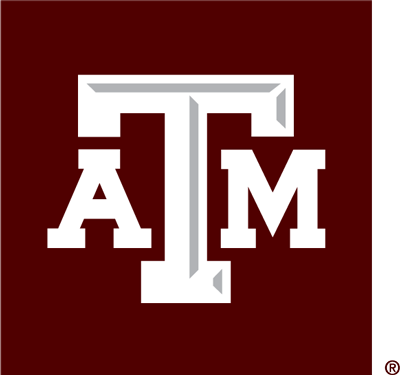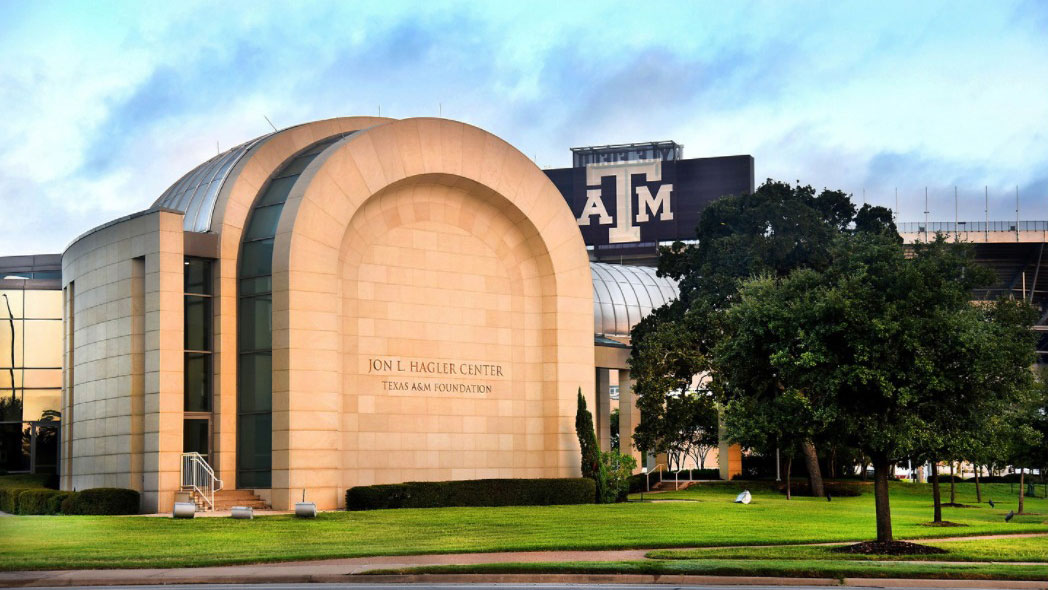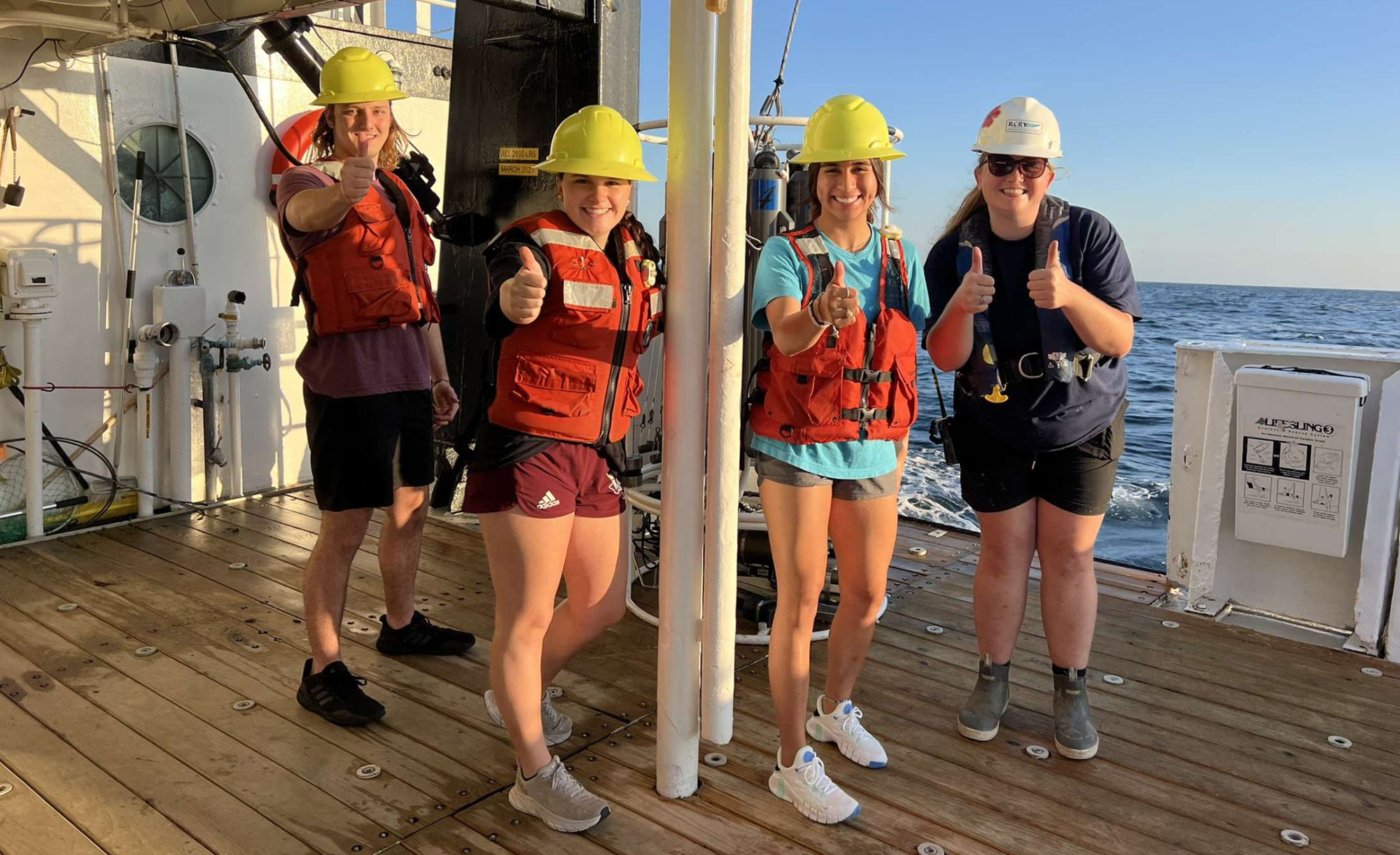
After 75 years of cutting-edge science, Texas A&M University’s Department of Oceanography continues to give every student fun, enthralling, high-impact experiences.
The oceanography department on Texas A&M’s main campus is the oldest degree-granting oceanography institution in the country. With decades of scientific research backing it, the department gives students a chance to put their knowledge into action with unique research cruises, such as the five-day Schade Cruise in the Gulf of Mexico.
Partially funded by a gift from Hal Schade ’67, this research cruise is free of cost for students. While it is a competitive application process, the covered costs make the trip affordable to every oceanography student.
The Schade Cruise brings up to 12 students and two faculty members offshore to collect data where they learn to eat, breathe and sleep science on a research vessel. Students get a taste of the real life of an oceanographer, including the crests and troughs.
“During these cruises, you could be exposed to many different ideas and fields of study, and you have the chance to meet and work with random people for an extended time,” Emma Scott-Wellman said. “It was really amazing.”
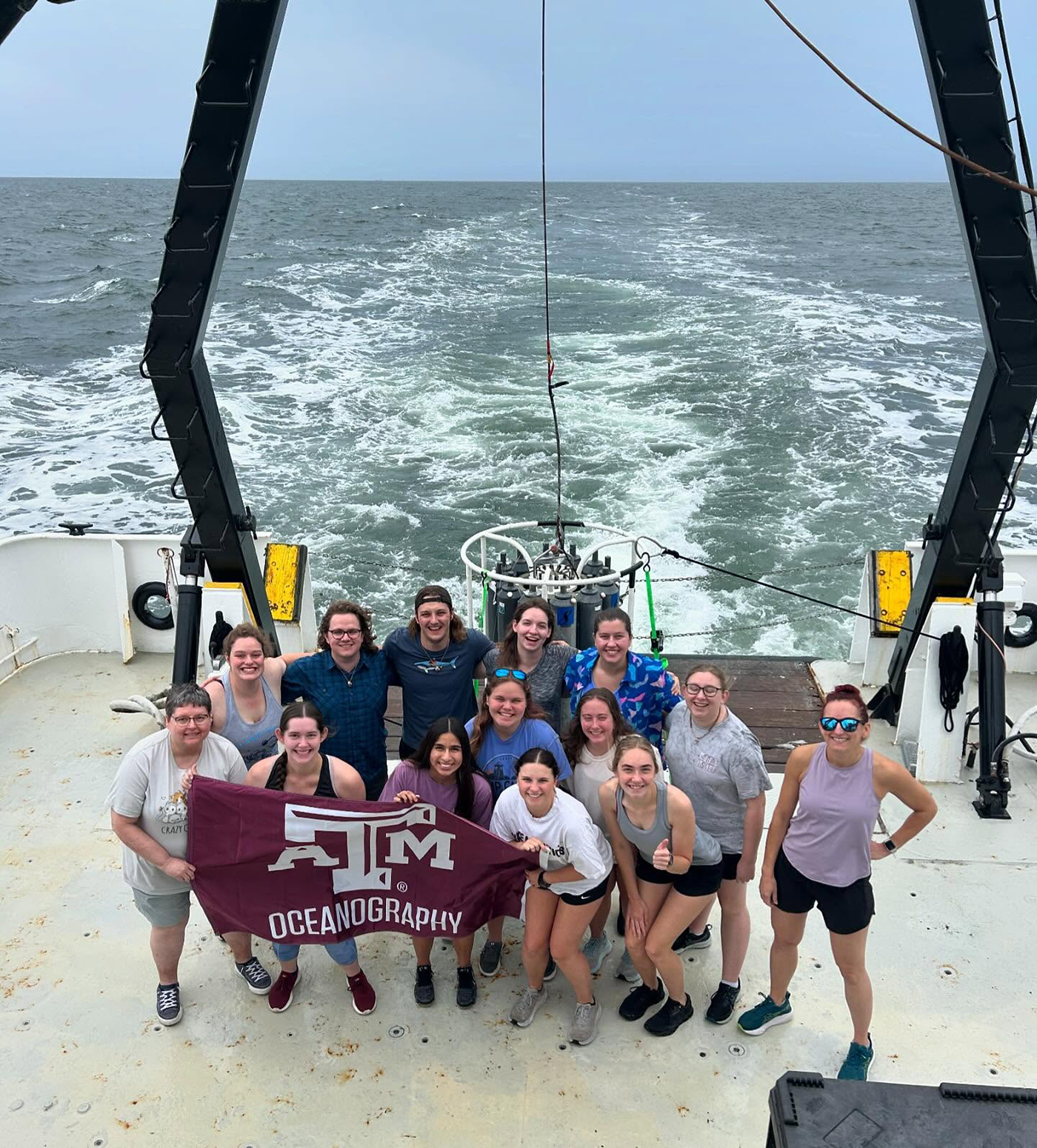
Scott-Wellman is a junior in the oceanography department and a member of the Corps of Cadets. She participated in the Schade Cruise in 2023 and 2024, though the first didn’t go quite as planned. The ocean can be unpredictable, and due to a tropical storm and some lost equipment the cruise was cut a day earlier than expected.
“Rough shift—long, wet and tiring. High seas and waves crashed against the deck, causing seasickness,” Scott-Wellman wrote in one of her ship log remarks. “Enjoyed the day despite conditions—saw how uncontrollable nature is and what a career in oceanography would be like. Work must go on!”
Scott-Wellman originally came to Texas A&M on a U.S. Army contract with a plan to serve in the military. After going on the Schade Cruise she changed course and decided to go into the civilian world. She explained the cruise as a “little career fair on a little floating island.”
“When you’re on a cruise, you’re working alongside professors who care about different things in the ocean,” Scott-Wellman explained. “But everything comes together, and everybody cares about what we’re all doing, We’re all working together to get data for a variety of projects.”
Students are assigned a specific data set to collect while at sea. The cruise is set up to operate 24 hours per day, with six students and a faculty member working midnight to noon, and the other half working noon to midnight. The goal is to have continuous collection of each data set.
During these cruises, you could be exposed to many different ideas and fields of study, and you have the chance to meet and work with random people for an extended time. It was really amazing.
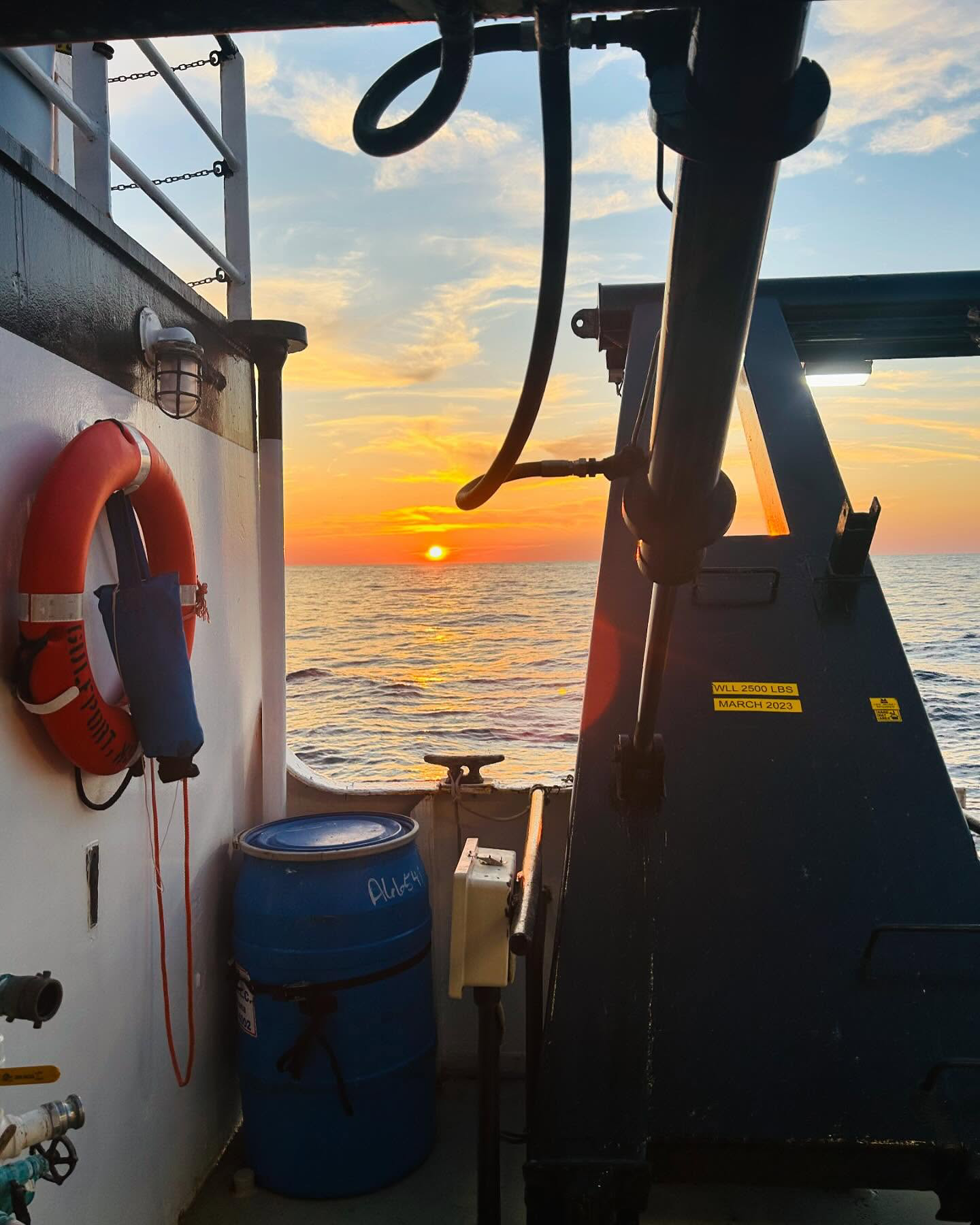
“It provides an upper hand for future research or future internships,” Scott-Wellman said. “Many of the jobs and research positions I've been looking at require time at sea. If we didn’t offer that at Texas A&M, I would not be eligible for many of the best opportunities.”
Dr. Chrissy Wiederwohl leads the cruise as chief scientist with her co-chief Dr. Shari Yvon-Lewis. Together, they lead students through collecting, logging, analyzing and processing data in the field. The trip is not tied to any specific class, so there’s a mix of oceanography students each year.
“Seeing the whole process and realizing all of the potential that you have, the impact you can make and the people you can meet was such an enriching experience that I want to continue doing this work and being with these people.”
All undergraduate oceanography students may apply to participate in the annual Schade Cruise and add “time at sea” to their resumes. The cruise also opens opportunities for research publication for undergraduate students.
Note: This article originally appeared on the Texas A&M Office of the Provost website.
